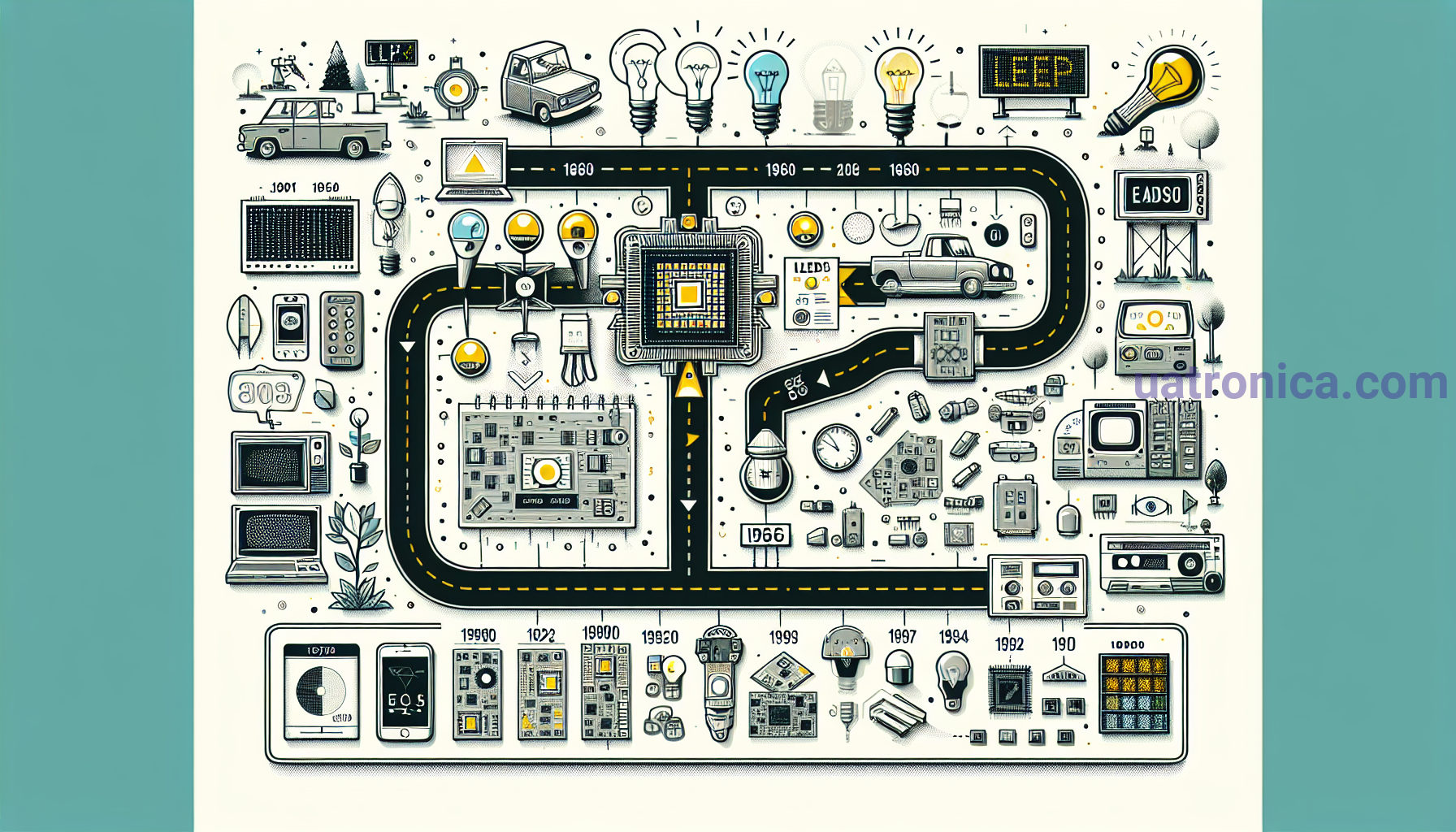Introduction
The semiconductor industry is one of the most important and rapidly developing areas of modern technology. Since the first semiconductor devices appeared many years ago, many discoveries have been made that have a direct impact on the future of electronics. Now we'll look at 12 revolutionary discoveries in the semiconductor industry that are shaping the future of electronics.
1. The invention of the transistor
The first revolutionary discovery that ushered in the semiconductor era was the invention of the transistor. A transistor is an electronic device that regulates the flow of electrons or holes and is currently used in all areas of electronics. The invention of the transistor opened up new opportunities for creating faster, more compact and powerful electronic devices.
Scientists William Shockley, Walter Brattain and John Bardeen discovered the transistor in 1947 at Bell Laboratories. This discovery changed the world of electronics and contributed to the emergence of computers, mobile phones, televisions and many other devices.
2. The invention of the microprocessor
Another important discovery related to semiconductors is the invention of the microprocessor. A microprocessor is an integrated electronic circuit that performs the functions of a central processing unit in a computer. The invention of the microprocessor opened the way to the creation of computers that take up less space, are faster and more powerful.
The first Intel 4004 microprocessor was introduced in 1971 and had only 2,300 transistors. Compared to today's microprocessors, which can have billions of transistors, this was a major advance.
3. Development of VLSI technology
VLSI (very large integrated circuit) technology is another major breakthrough in the semiconductor industry. It allows the creation of extremely small integrated circuits that include millions or even billions of transistors. VLSI technology made it possible to create computers, smartphones, televisions and other electronic devices that are used today.
The first design made using VLSI technology is the Intel 4004 microprocessor. Since then, VLSI technology has become the standard in semiconductor device manufacturing and has expanded the possibilities of electronics to incredible limits.
4. Development of CMOS technology
The development of CMOS technology (complementary-metal-oxide-semiconductor) is an indicator of the direction in which the semiconductor industry is developing. CMOS technology allows to reduce the power consumption of the device and improves its performance.
CMOS systems are the basis for many modern electronic devices, including computers, smartphones and tablets. Therefore, the development of CMOS technology was and continues to be of great importance for the electronic industry.

5. Invention of LEDs
LEDs are semiconductor devices that convert electrical energy into light. They are used in many devices, including lighting, displays, traffic signals, and many others.
The first LEDs were created in the 1960s. Since then, there has been a great evolution of LED technology, which has led to a significant improvement in the efficiency and quality of the light they emit.
6. Development similar to spintronics
Spintronics is a branch of semiconductor science that studies the properties of spin current. It has great potential for the development of new information storage and processing technologies.
One of the most important achievements of spintronics is the development of spintronics-like. This material has the potential to create extremely efficient electronic devices, including logic gates, memory and sensors.
7. Invention of photovoltaic elements
Photovoltaic cells, or solar cells, are semiconductor devices that convert solar radiation into electric current. They are widely used to convert solar energy into electricity.
Due to the continuous development of photovoltaic cell technologies, the efficiency of solar cells has increased significantly. This allows us to use solar energy as a more ecological and efficient alternative to traditional energy sources.
8. The invention of niobium oxide
Niobium oxide is a semiconductor material that has a very high dielectric constant and other unique properties. It is widely used in modern semiconductor devices, particularly in memory and transistors.
One of the most important characteristics of niobium oxide is its large amount of energy storage per unit volume. This allows you to increase the performance of the device and reduce its size.
9. Development of silicon-germanium technologies
Silicon germanium technologies are semiconductor materials that have better electronic characteristics than conventional silicon. The use of silicon-germanium can improve the performance and performance of electronic devices.

The development of silicon-germanium technologies opens up new opportunities for creating faster and more energy-efficient devices. This could be of great importance for the electronics industry, particularly for smartphones, computers and other devices that require high performance.
10. Invention of gallium arsenide
Gallium arsenide is a semiconductor material that has excellent electronic characteristics. It is widely used in devices that require high efficiency and speed, in particular in mobile devices, supercomputers and military equipment.
In addition, gallium arsenide is also used in various types of light, including lasers, infrared LEDs, and diodes. This semiconductor material opens up new opportunities for the electronics industry and helps achieve higher speeds and productivity.
11. Development of cryogenic technologies
Cryogenic technologies are technologies used to work with ultra-low temperatures. They play an important role in the investigation of semiconductor materials under extreme conditions.
Modern production technology tries to understand how the properties of materials change at low temperatures. This makes it possible to develop more efficient and durable electronic devices, in particular in the field of quantum technology.
12. Development of quantum dot devices
The latest revolutionary discovery in the semiconductor industry is the development of quantum dot devices. Quantum dot devices are very small nanostructures that have quantum properties.
The use of quantum dots opens up new possibilities in electronics, in particular, the fatigue of cryptography, fast depolarization. They may also find applications in quantum computers, which have the potential to revolutionize the world of electronics.
Conclusions
12 Semiconductor Breakthroughs That Are Point-Shaping the Future of Electronics Show the Speed and Scale of Progress in the Field. The invention of the transistor and the microprocessor significantly changed the world of electronics, and the further development of semiconductor technologies opened new horizons.
These discoveries provided the basis for the creation of fast-growing industries such as information technology, telecommunications, energy and medical technology. With each new discovery, electronic devices become faster, more efficient and more powerful, surpassing our wildest expectations.
In the future, we can expect even greater progress in the semiconductor industry, in particular in the development of quantum technology and artificial intelligence. This will open up new opportunities for creating revolutionary electronic devices and systems that will change our perception of the world.
Source: Wikipedia.org - Transistor










